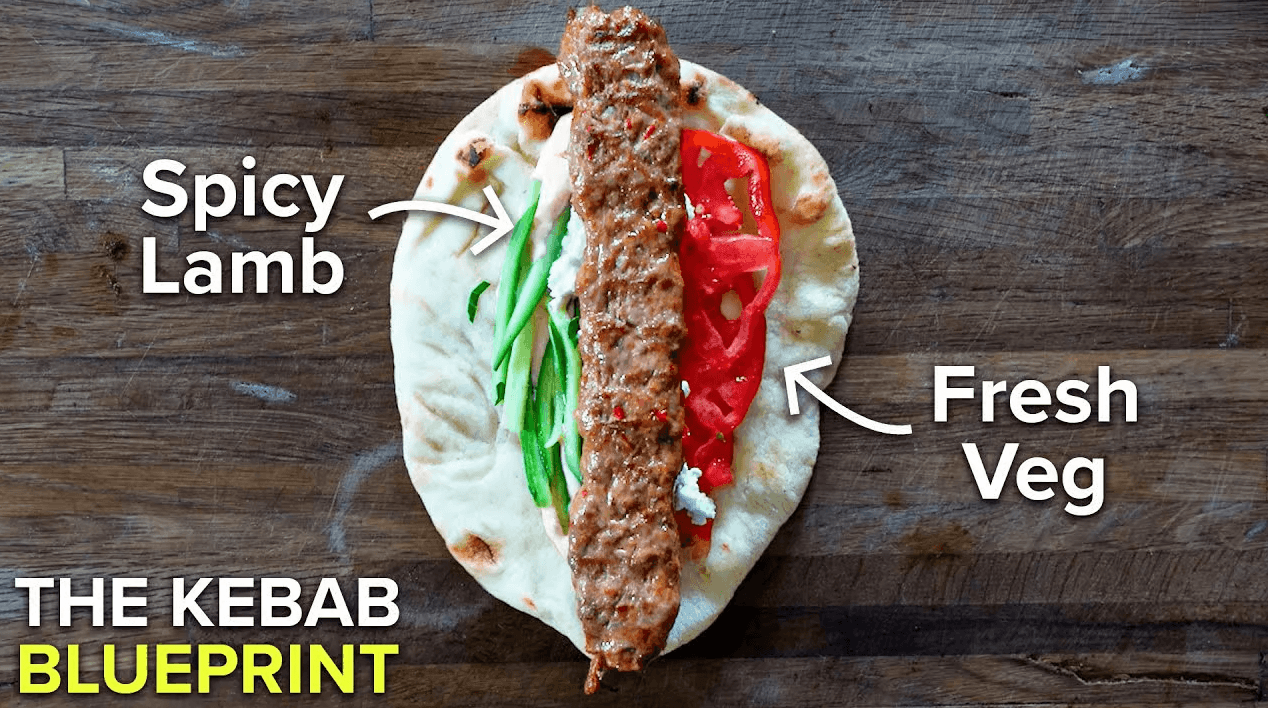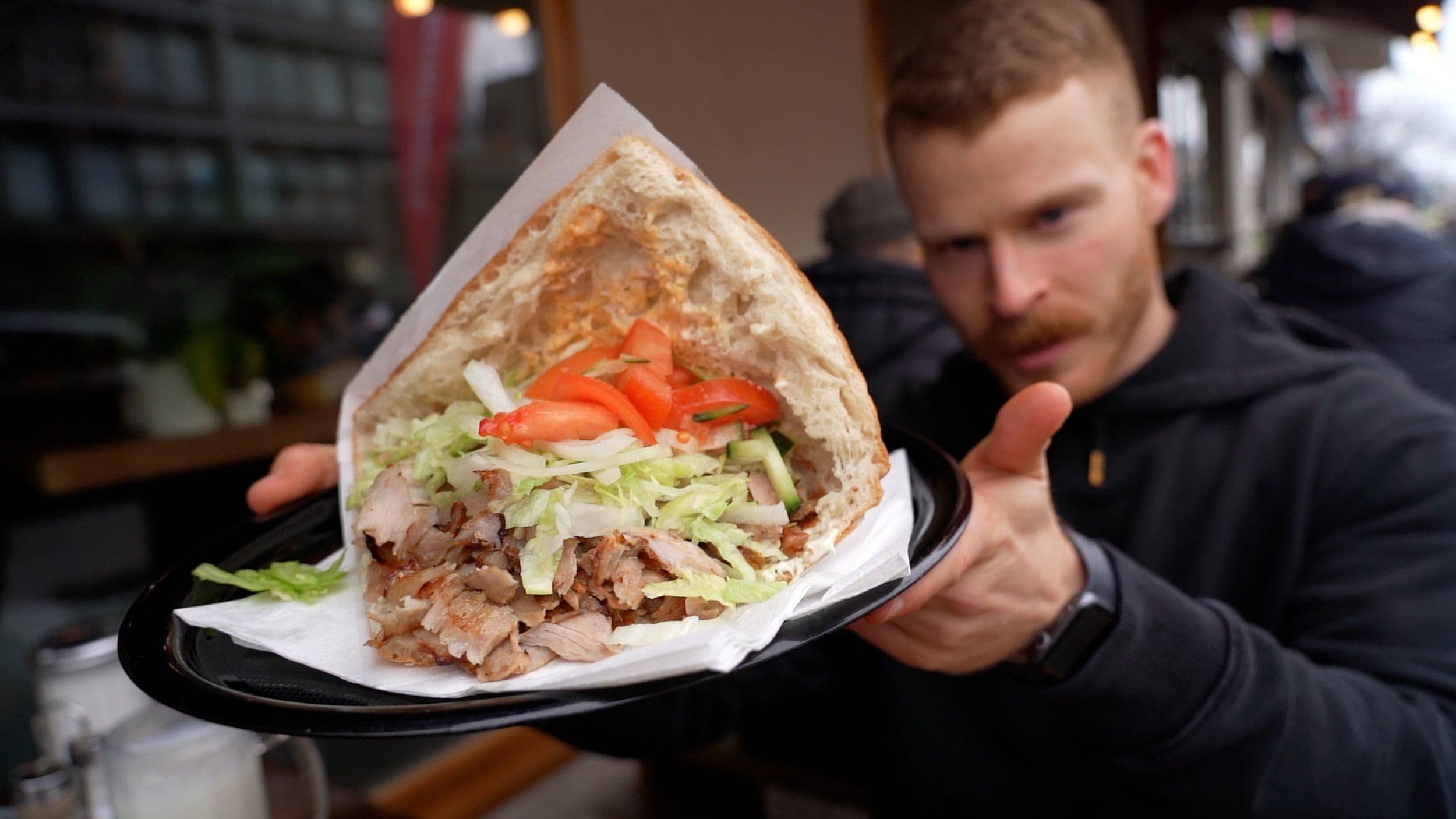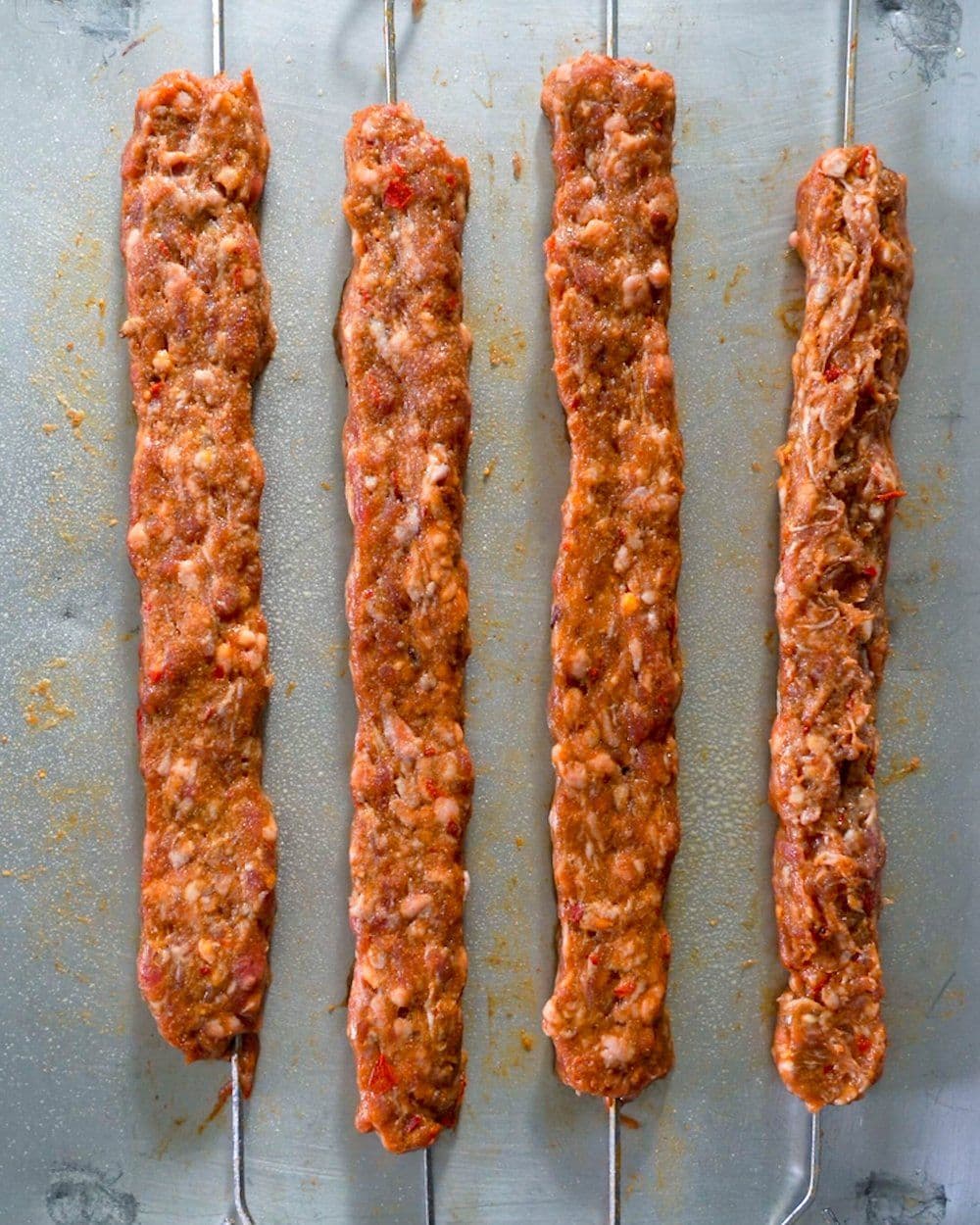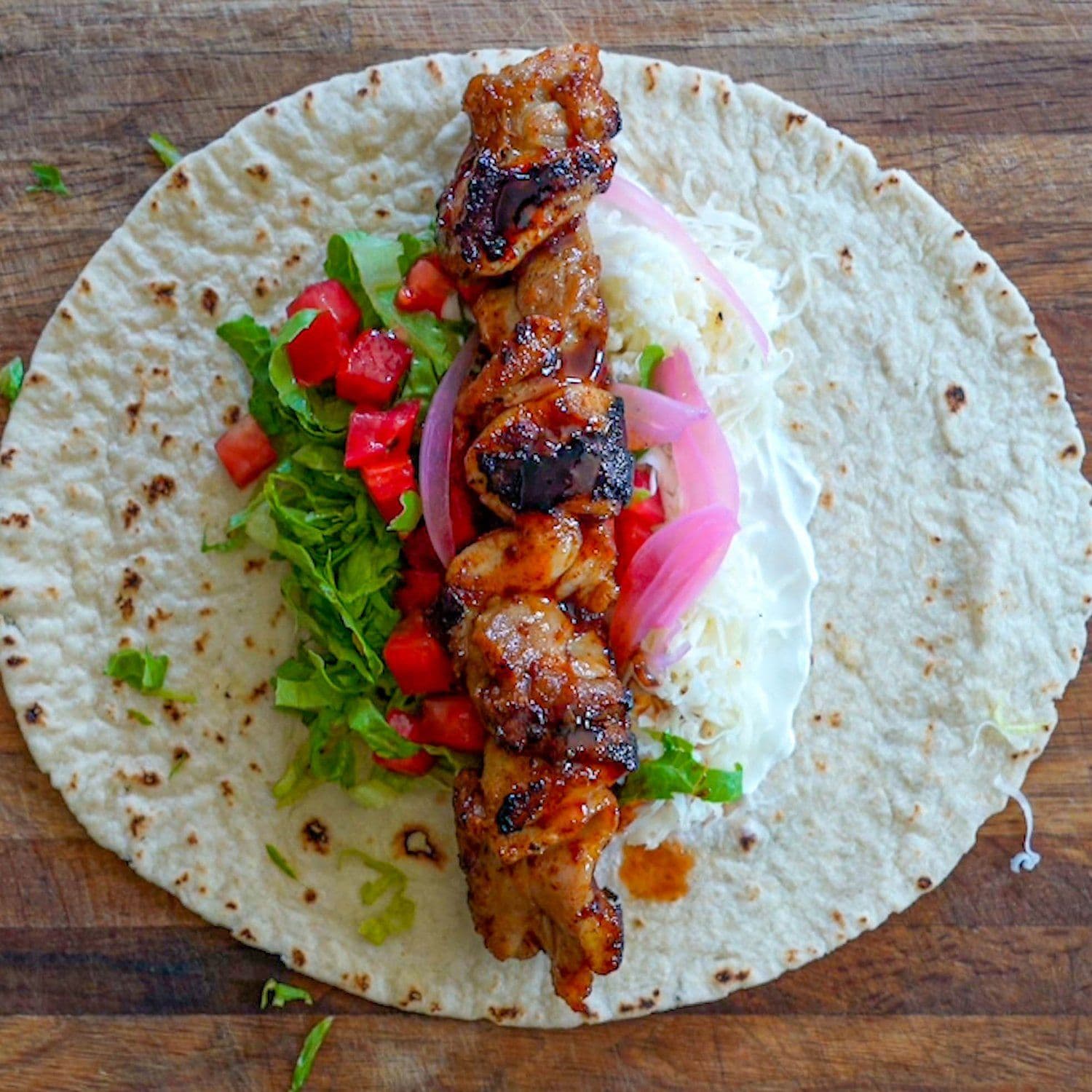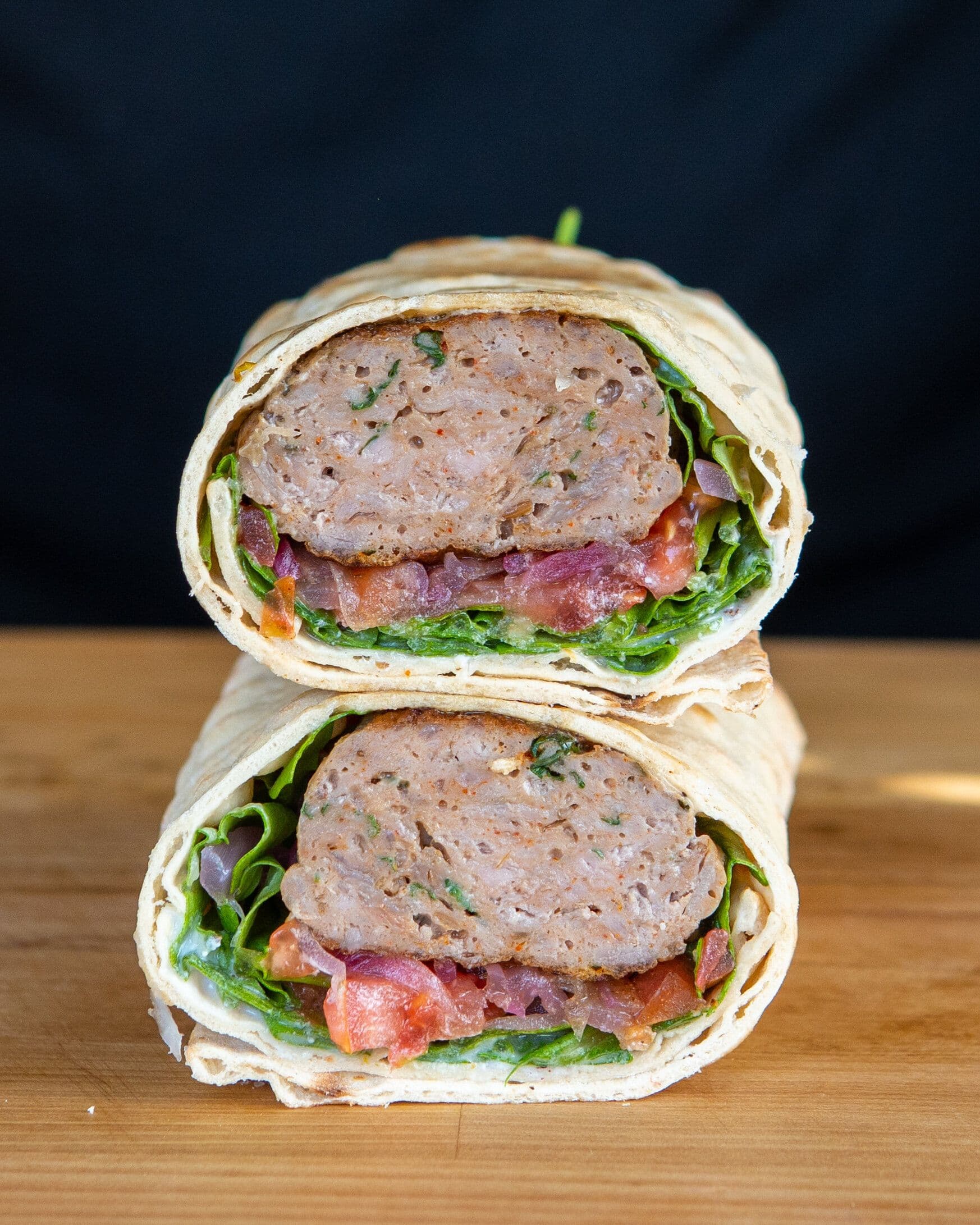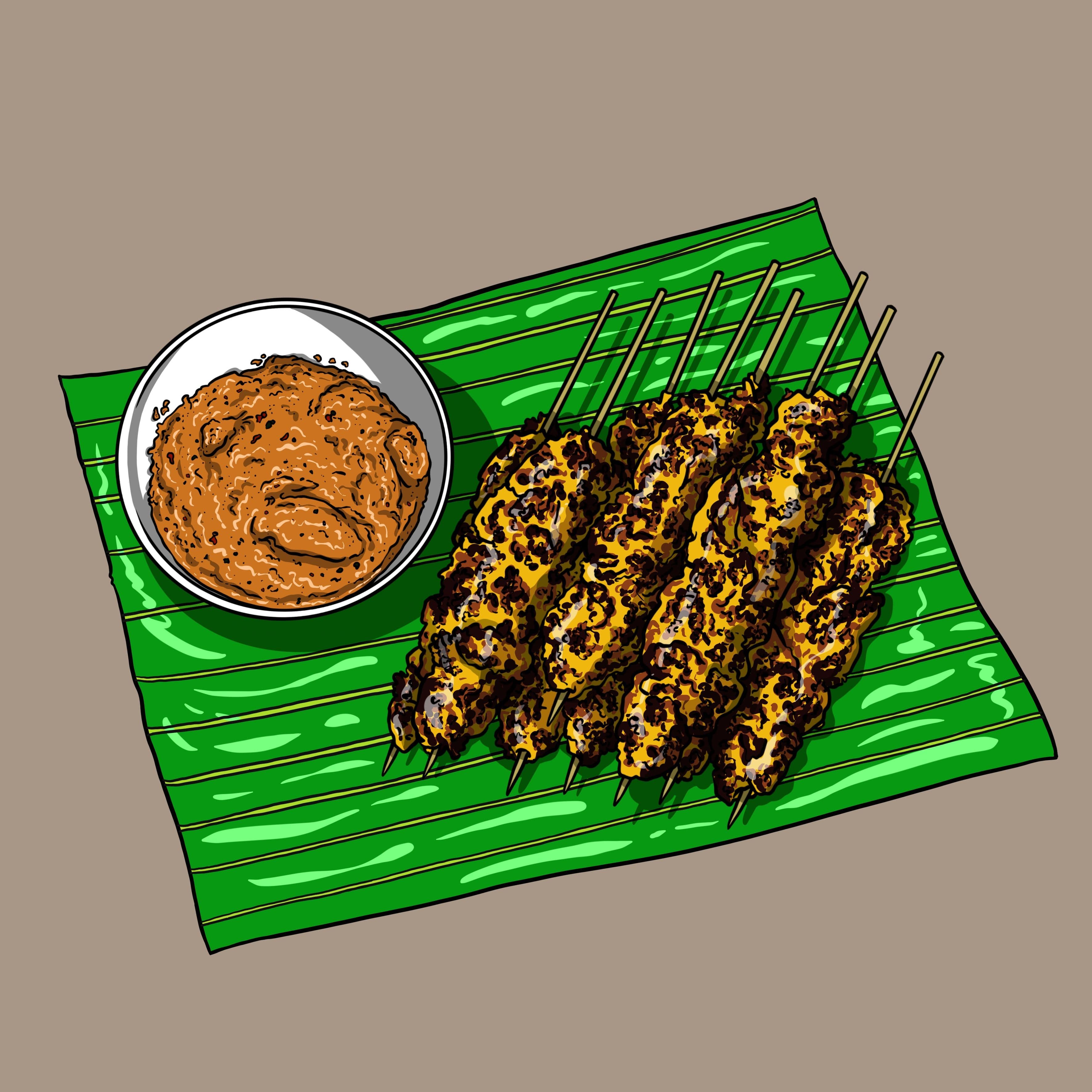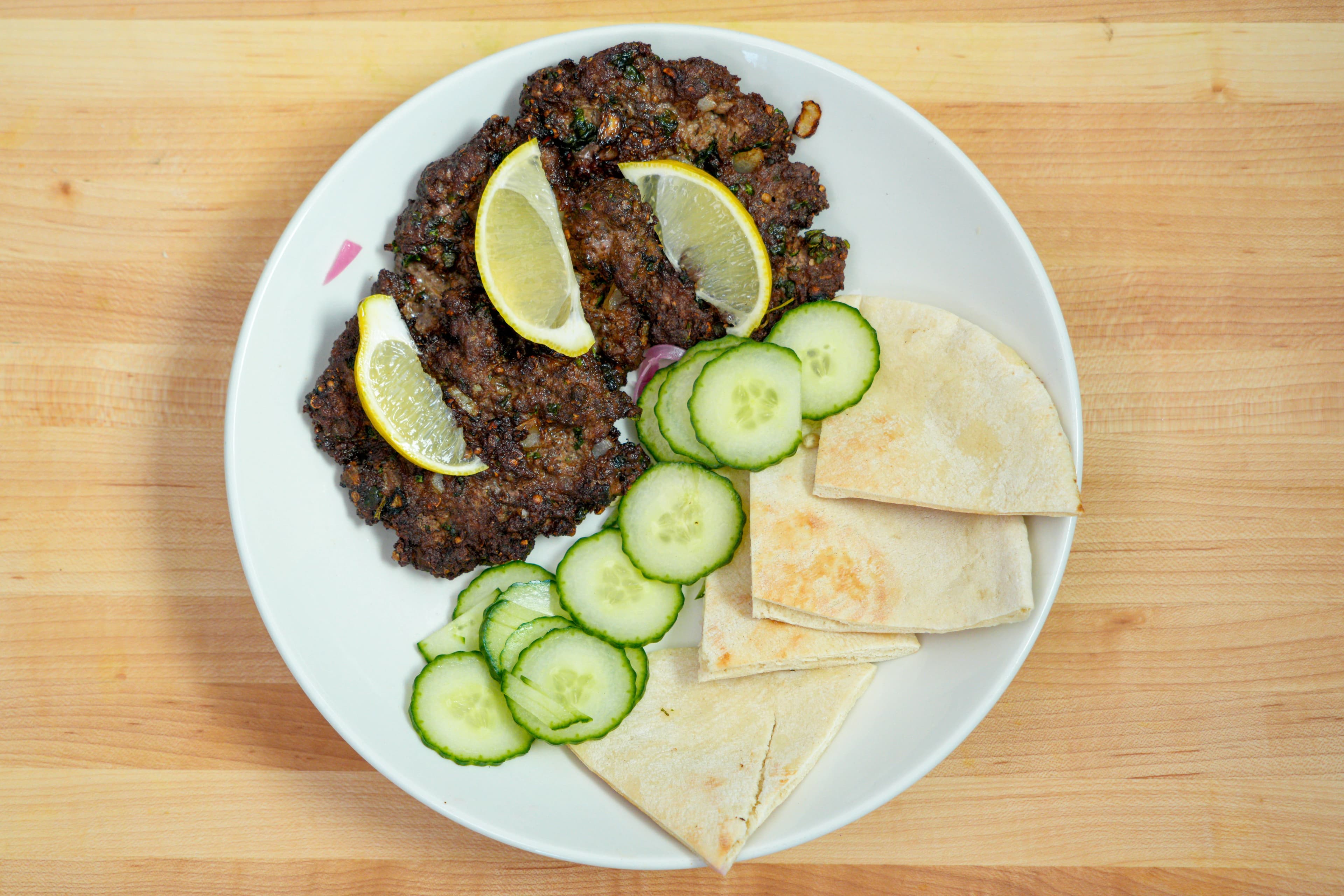In general, kebabs deliver a ton of flavor for very little effort. If you want to impress, they are great for prepping in large batches ahead of time and cooking up for a crowd (or just meal prepping for yourself.)
- Even if you don’t have a grill, these can still be made indoors.
A cultural note on kebabs
Kebabs have origins in over 22 countries in the Middle Eastern world, and you’ll find endless variations across different borders.
The essence of a kebab is grilled seasoned meat on a stick. Famous examples include the:
- Adana kebab from Turkey
- Seekh kebab from India, Pakistan, and Afghanistan
- Yakitori from Japan
We could do a deep dive into all of these and more, but kebabs across cuisines share base characteristics that will help you understand them and start trying various versions for yourself:
The kebab blueprint
The 5 components of a kebab are:
- Meat
- Salt (usually ~1.5% by weight of the meat)
- Minced aromatics (herbs or vegetables)
- Dry spices
- Sauces or glazes
Ground meat method
Mix the meat with the salt, spices, and aromatics, shape it onto skewers, grill, and serve with sauces.
Pro-tip: you’ll need a fatty blend, at least 15-20% fat or higher (ideally), and mix the seasonings into the meat until it is tacky, which will hold its shape on the skewer and result in a slightly bouncy, satisfying texture (instead of a loose burger texture).
Whole meat method
Make a glaze with the spices & aromatics, and sauces. Salt the meat, cut into pieces, add it to skewers, grill, glaze, and serve.
Pro-tip: use fattier cuts like chicken thighs instead of breasts that will avoid drying out on the grill.

